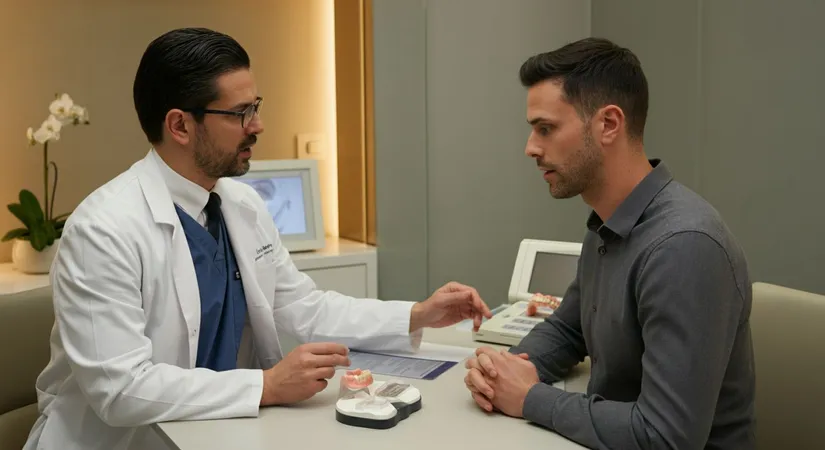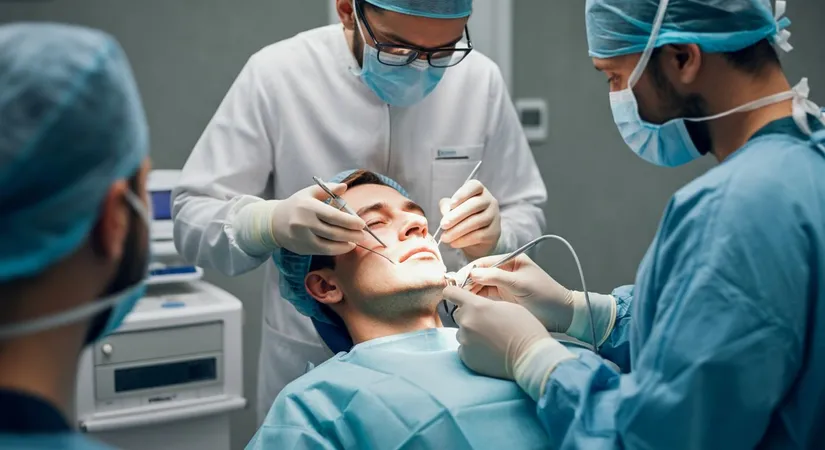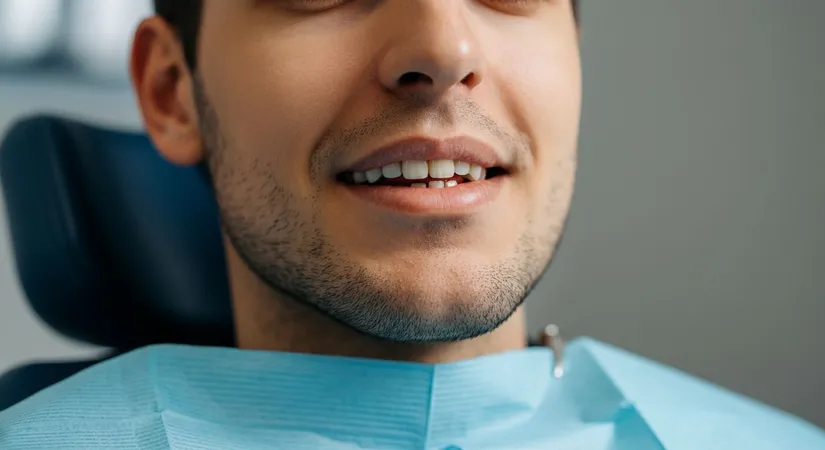Unlocking Comfort: Choosing the Best Jaw Prosthesis for You
Explore the world of jaw prostheses, discover the best options and innovations, and find local clinics near you.
Jaw prosthesis is an innovative field in dental health that involves reconstructing or replacing parts of the jaw with prosthetic devices. Whether due to injury, illness, or congenital conditions, jaw prostheses provide crucial solutions for many patients seeking to restore function and aesthetics to their facial structure. In this guide, we'll explore what jaw prostheses are, how they work, and the latest advancements in this critical area of dental surgery.
What is a Jaw Prosthesis and How Does It Work?
Understanding the Functionality of Jaw Prostheses
A jaw prosthesis, or mandibular prosthesis, is a custom-made device designed to replace missing parts of the jaw bone. This can be due to surgery, trauma, or congenital issues. The prosthesis is crafted to meet the specific anatomical and functional needs of the patient, ensuring both structural support and aesthetic restoration. Typically, the integration of the prosthesis involves a surgical procedure where biocompatible materials are used to attach it to the remaining jaw bone or soft tissue.
Types of Jaw Prostheses
- Composite Resin: Known for its aesthetic appeal and ease of customization.
- Titanium Structures: Valued for their durability and biocompatibility.
The choice between these types depends on factors such as the extent of jaw loss and patient-specific requirements. Each type offers distinct advantages in terms of durability and compatibility.
Steps in Jaw Prosthesis Integration
- Assessment: Detailed evaluation of the patient's jaw structure and needs.
- Customization: Designing the prosthesis to fit the unique anatomy of the patient.
- Surgical Integration: Attaching the prosthesis using biocompatible materials.
These steps ensure that the prosthesis not only fits well but also functions effectively, restoring both the appearance and function of the jaw.
For more information on the latest advancements in jaw prosthesis technology, you can explore cutting-edge solutions for enhanced functionality.

Choosing the Best Jaw Prosthesis for Comfort and Function
Material Considerations for Jaw Prostheses
When selecting a jaw prosthesis, the choice of material is crucial for ensuring both comfort and functionality. High-grade polymers, ceramics, and metal alloys are popular options, each offering distinct advantages. For instance, polymers provide flexibility and comfort, making them ideal for patients with sensitive tissues. Ceramics, on the other hand, are known for their aesthetic appeal and are often chosen for their natural appearance. Metal alloys, such as titanium, offer unparalleled durability and strength, making them suitable for individuals requiring robust support.
Importance of Custom Fitting
Custom fitting is essential to maximize the effectiveness of a jaw prosthesis. An accurately fitted prosthesis minimizes discomfort and enhances the natural movement of the jaw. Professional assessments by dental surgeons or prosthodontists are vital in this process. They ensure that the prosthesis aligns perfectly with the patient's unique anatomical structure, facilitating efficient chewing and speech. This personalized approach not only improves functionality but also boosts the patient's confidence by restoring a natural appearance.
Factors Influencing Jaw Prosthesis Selection
- Material Durability: Consider the longevity and wear resistance of the material.
- Patient Lifestyle: Choose materials that align with the patient's daily activities.
- Biocompatibility: Ensure the material is compatible with the patient's body to prevent reactions.
These factors play a significant role in determining the most suitable prosthesis for an individual, ensuring both comfort and long-term functionality.
Steps to Achieve Optimal Fit
- Initial Consultation: Discuss needs and expectations with a specialist.
- Detailed Measurements: Capture precise jaw dimensions for a custom fit.
- Trial and Adjustment: Test the prosthesis and make necessary modifications.
Following these steps ensures that the prosthesis not only fits well but also functions effectively, enhancing the patient's quality of life.

Innovations in Jaw Prosthesis: Latest Technologies Explained
Revolutionizing Jaw Prosthesis with 3D Printing
3D printing technology has transformed the field of jaw prosthetics by enabling the production of highly customized and precise prosthetic designs. This technology allows for the creation of prostheses that perfectly match the patient's unique anatomical structure, significantly reducing the time required for both manufacturing and surgical fitting. For example, a patient with a complex jaw structure can benefit from a 3D-printed prosthesis that is tailored to their specific needs, ensuring a perfect fit and optimal functionality. Additionally, 3D printing reduces waste and costs associated with traditional manufacturing methods, making it a more sustainable option.
Advancements in Biomaterials for Enhanced Osseointegration
The development of advanced biomaterials has been a game-changer in jaw prosthetics, particularly in promoting osseointegration. These materials facilitate the natural integration of bone tissue with the prosthetic device, enhancing the durability and stability of the implant. For instance, a patient undergoing jaw reconstruction can benefit from biomaterials that mimic the properties of natural bone, reducing the risk of complications and infections. This innovation not only improves the longevity of the prosthesis but also enhances the patient's overall quality of life by ensuring a more natural and comfortable fit.
Key Features of Modern Jaw Prosthesis Technologies
- Precision Fit: 3D printing ensures a custom fit tailored to individual anatomy.
- Biocompatibility: Advanced biomaterials promote natural integration with bone tissue.
- Reduced Recovery Time: Innovations lead to quicker surgical procedures and healing.
These features highlight the significant advancements in jaw prosthesis technology, offering patients improved outcomes and enhanced comfort.
Steps in Implementing New Prosthetic Technologies
- Assessment: Evaluate the patient's specific needs and anatomical structure.
- Design: Utilize 3D printing to create a precise and personalized prosthesis.
- Integration: Employ advanced biomaterials for optimal osseointegration and stability.
Following these steps ensures that patients receive the most advanced and effective jaw prosthetic solutions available, enhancing both functionality and comfort.

Finding Jaw Prosthesis Clinics: Your Local Options
Key Considerations When Choosing a Clinic
When searching for a clinic specializing in jaw prosthesis, it's essential to evaluate several critical factors to ensure optimal care and outcomes. First, verify the credentials of the surgeons, ensuring they are board-certified and have extensive experience in maxillofacial procedures. This expertise is crucial for complex surgeries like jaw reconstruction.
Additionally, assess the clinic's facilities. State-of-the-art technology can significantly enhance the precision and success of procedures. For example, clinics equipped with advanced imaging systems can offer more accurate diagnostics and treatment planning, leading to better patient outcomes.
Evaluating Clinic Services and Support
Another important aspect is the range of services offered. Clinics that provide comprehensive consultations and follow-up care are preferable, as they ensure a holistic approach to treatment. This includes a thorough evaluation of the patient's medical history and a detailed examination of their oral and facial structure.
- Comprehensive Consultations: Ensure all patient needs and concerns are addressed.
- Advanced Imaging: Facilitates accurate diagnostics and treatment planning.
- Follow-up Care: Essential for monitoring recovery and addressing any complications.
These services not only enhance the treatment experience but also contribute to successful long-term outcomes.
Steps to Identify the Right Clinic
- Research: Gather information on clinics in major cities like New York and Los Angeles.
- Consultation: Schedule visits to discuss treatment options and evaluate facilities.
- Decision: Choose a clinic based on expertise, technology, and patient care quality.
Following these steps can help you find a reputable clinic that meets your specific needs, ensuring a successful jaw prosthesis procedure.
Revolutionizing Jaw Prosthesis with 3D Printing
Comprehensive Care in Jaw Prosthesis Clinics
Frequently Asked Questions
What is a jaw prosthesis and how does it work?
What are the latest innovations in jaw prosthesis technology?
How do I choose the best jaw prosthesis for comfort and function?
What should I consider when selecting a jaw prosthesis clinic?
What are the steps involved in integrating a jaw prosthesis?
Discover the art of healthy beauty with estethica's award-winning services. Call now for your free consultation and take the first step towards a new you!
📞 Call for Your Free Consultation